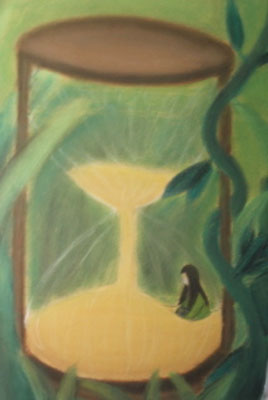All Nonfiction
- Bullying
- Books
- Academic
- Author Interviews
- Celebrity interviews
- College Articles
- College Essays
- Educator of the Year
- Heroes
- Interviews
- Memoir
- Personal Experience
- Sports
- Travel & Culture
All Opinions
- Bullying
- Current Events / Politics
- Discrimination
- Drugs / Alcohol / Smoking
- Entertainment / Celebrities
- Environment
- Love / Relationships
- Movies / Music / TV
- Pop Culture / Trends
- School / College
- Social Issues / Civics
- Spirituality / Religion
- Sports / Hobbies
All Hot Topics
- Bullying
- Community Service
- Environment
- Health
- Letters to the Editor
- Pride & Prejudice
- What Matters
- Back
Summer Guide
- Program Links
- Program Reviews
- Back
College Guide
- College Links
- College Reviews
- College Essays
- College Articles
- Back
Life (In 20 Minutes)
Two loud, crowded tables of kindergarteners are sitting down to breakfast. Some still have spoons dipped into their sugar filled cereal; many are already done with their breakfast. A girl sitting on the corner of the table has a plastic birthday hat on with the name ‘Aleigha’ written across it. Beside her, a girl with blond hair twists her napkin with all her might while another girl is turned around in her seat listening to the next table’s conversation, oblivious to the boy in a Spiderman jacket sitting on his knees next to her. A boy in a neon green sweatshirt is eating his cereal with his fingers, and the boy at the end of the table is watching the rest of the room with woeful eyes. Soon, the boy in the neon green gets the other boy to play a game of ‘rock, paper, scissors’ and it trends across the tables.
These children do not know it, but their actions are symbolizing more than themselves. They are symbolizing the stages of life. We have the celebrations in life, of birthdays, weddings, and holidays. We have the trials of life, of school, work, and family. They show people are never satisfied with where they are at, what they are doing, or how things are done. They show a generation of thinkers, doers, and creators, as well as a generation of copiers, followers, and finishers.
The teacher tells the kids when it’s time to leave; her words unimportant in the grand scheme. They get into orderly lines to go clear their trays, but before they leave ‘Aleigha’ has to put her birthday hat back on. They march across the lunchroom in the most order that they have been in the whole time, and they take turns clearing their trays. Patiently, they dump the rest of their milk out, throw away their garbage, and put up their trays, before disappearing from view. Soon, there is only three girls left, held up by a particularly slow one. They wait for a minute, utilizing only one side of the clearing space, before a girl skips ahead and puts her tray up. The other girl, wearing a purple flower in her hair, waits patiently for her turn. Soon, she too has cleared her tray, and disappears out of the lunchroom.
Similar to life, we all leave in different, but the same, ways when we are called away. In a somewhat orderly fashion we disappear to the unknown. Some people find it important to hold on to who they were when they go, some just follow the crowd, and others will find their own way. But, in one way or another, we are all gone.
Two Lucky charm cereal pieces are still sitting on the tables, along with two crumbs of unknown origins. A few drops of red juice and a small puddle of chocolate milk are also present; a day old tator tot lays on the floor. On the opposite table there is a smear of crimson juice, a puddle of dried milk, and still more crumbs.
When we leave, we will leave something behind. Rather it’s something fresh or something old, something staining history or something easily erased from history, we all leave our marks over the marks of the past.
The tables sit empty, deserted. The whole lunchroom is quieter now. People walk by without a glance at where the kindergarteners used to sit. No one remembers what is gone.
This is the future of our life.
This is after breakfast.
This is life.
This is kindergarten.
This is then.
This is now.

Similar Articles
JOIN THE DISCUSSION
This article has 0 comments.
